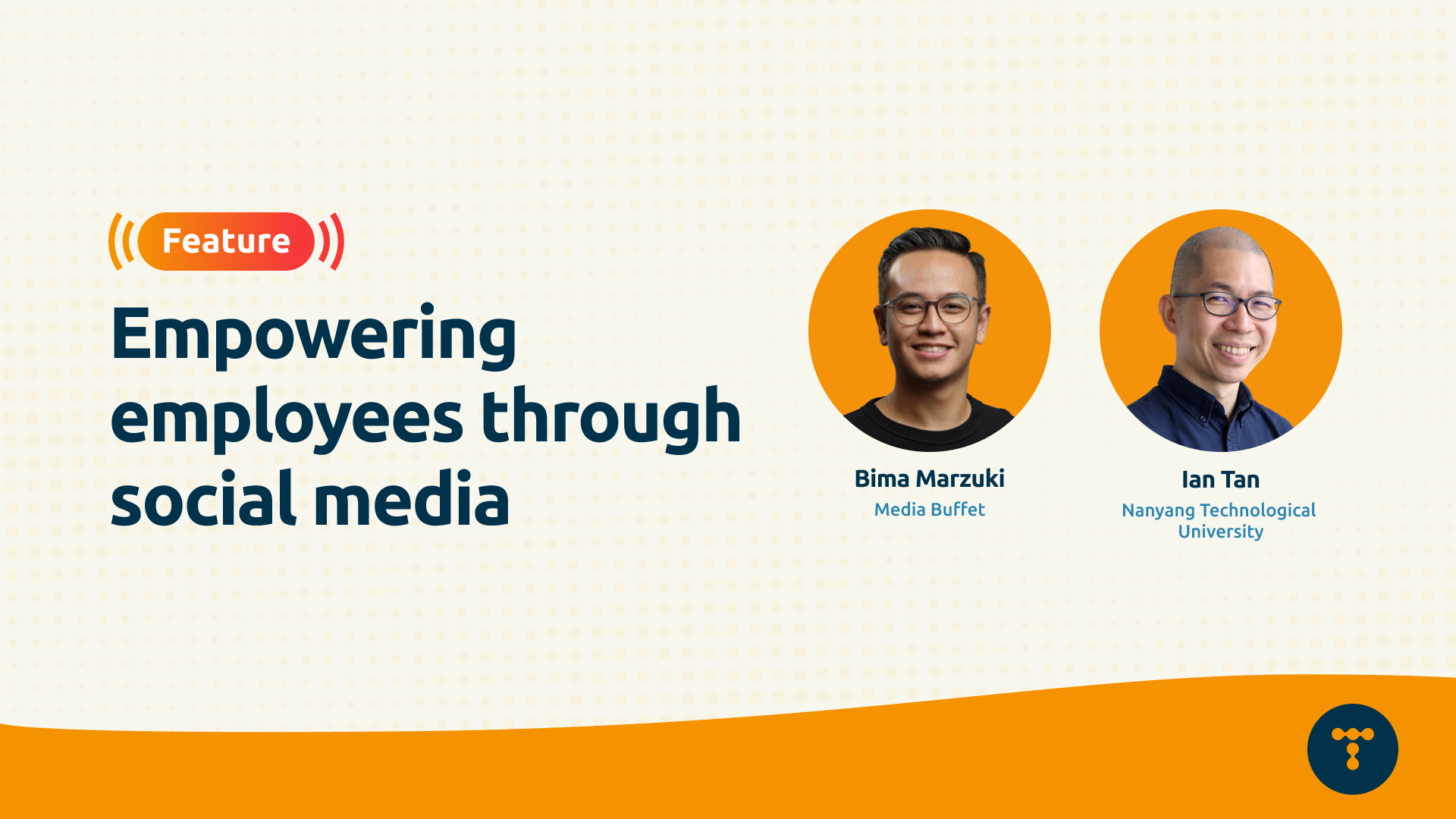According to 2024 Ogilvy Influencer Trends Report, 89 per cent of C-Suite marketers acknowledged that employee influencers hold immense value to their businesses. Yet for many brands and organisations, they are a largely untapped resource.
Telum sat down with two professionals - Bima Marzuki, Founder and CEO of a 360-communications agency in Indonesia - Media Buffet, and Ian Tan, a former comms professional turned strategic comms lecturer at Nanyang Technological University in Singapore - to discuss employee advocacy on social media.
Employees as social media catalyst
Originally rooted in HR practices with a focus on internal communications and company culture, employee advocacy has since evolved. Today, employees are using social media to shed light on their work and promote their employer to their personal networks, including family, friends and followers.
“A brand today is formed in people's minds from how they encounter your brand” - Ian Tan, Nanyang Technological University.
Ian observed that online audiences are more inclined to engage with the perspectives of individuals rather than faceless entities. This trend is reflected in a LinkedIn statistic, which showed that the click-through rate on a piece of content is two times higher on average when shared by an employee versus content shared by the company.
Ian explained this is due to the authenticity the individuals bring. He said when an employee who is passionate about their work highlights the brand positively online, it reinforces the perception that the brand is true to its values and committed to its goals.
On the other hand, Bima pointed out that brands can benefit from increased exposure through an employee's network. Citing LinkedIn, he explained the platform allows employees to showcase their knowledge, expertise and critical thinking through content, which in turn brings awareness to the brands that they represent.
“... I believe that a solid brand should be constructed (built) from personal, corporate and product branding” - Bima Marzuki, Media Buffet.
Overcoming concerns
Despite the clear benefits of driving employee advocacy on social media, many companies remain cautious about adopting this into their strategies.
Bima suggested that companies may have concerns about their employees posting inappropriate content online. This includes slanderous or offensive content towards other brands in an attempt to promote oneself, which would result in unwanted social media crises.
Ian pointed out there is scepticism surrounding social media platforms like LinkedIn: “...they feel that LinkedIn is a place for people to boast about their achievements and their certifications.”
In contrast, he views the platform objectively for professional use: “When you write your CV, your resume, don't you want to put your achievements there? I see it (LinkedIn) simply as a live version of your CV,” Ian stressed.
The way forward
Bima warned if employee advocacy is not driven as a strategic program, employees may start creating content on their own. Without proper training, the employees may not understand the boundaries or how to do it in a way that will benefit both the company brand and their personal brand.
Ian shared the same sentiment: “...You can't just tell people to go out there and share anything you like, because not everyone is savvy with social media. They may not be clear on what are appropriate things to share, such as oversharing, or if they keep sharing things that are not interesting.”
Speaking from his experience, Bima added, “I found that educating the market or the industry was one of the most effective approaches.” He encouraged employees to engage with topics that are directly related to their expertise, and share their insights on social media.
Employees as the next social media voice
In closing, employee advocacy, when approached strategically from the top-down, can serve as a useful platform for sharing a brand’s message effectively, reaching a wider audience and building connections.
“If what you do is meant for public consumption, then put it online,” Ian concluded.



